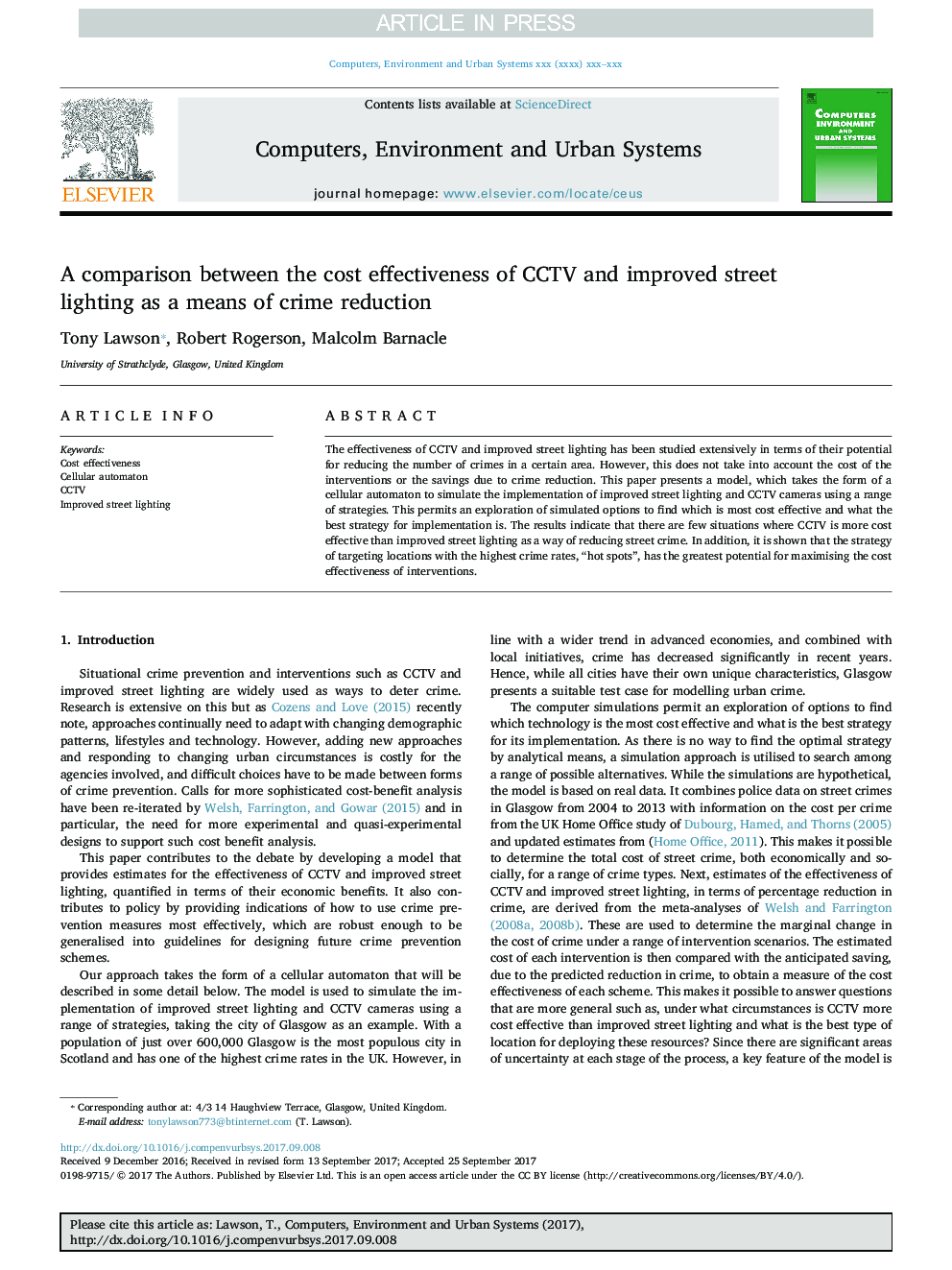| Article ID | Journal | Published Year | Pages | File Type |
|---|---|---|---|---|
| 6921866 | Computers, Environment and Urban Systems | 2018 | 9 Pages |
Abstract
The effectiveness of CCTV and improved street lighting has been studied extensively in terms of their potential for reducing the number of crimes in a certain area. However, this does not take into account the cost of the interventions or the savings due to crime reduction. This paper presents a model, which takes the form of a cellular automaton to simulate the implementation of improved street lighting and CCTV cameras using a range of strategies. This permits an exploration of simulated options to find which is most cost effective and what the best strategy for implementation is. The results indicate that there are few situations where CCTV is more cost effective than improved street lighting as a way of reducing street crime. In addition, it is shown that the strategy of targeting locations with the highest crime rates, “hot spots”, has the greatest potential for maximising the cost effectiveness of interventions.
Related Topics
Physical Sciences and Engineering
Computer Science
Computer Science Applications
Authors
Tony Lawson, Robert Rogerson, Malcolm Barnacle,
